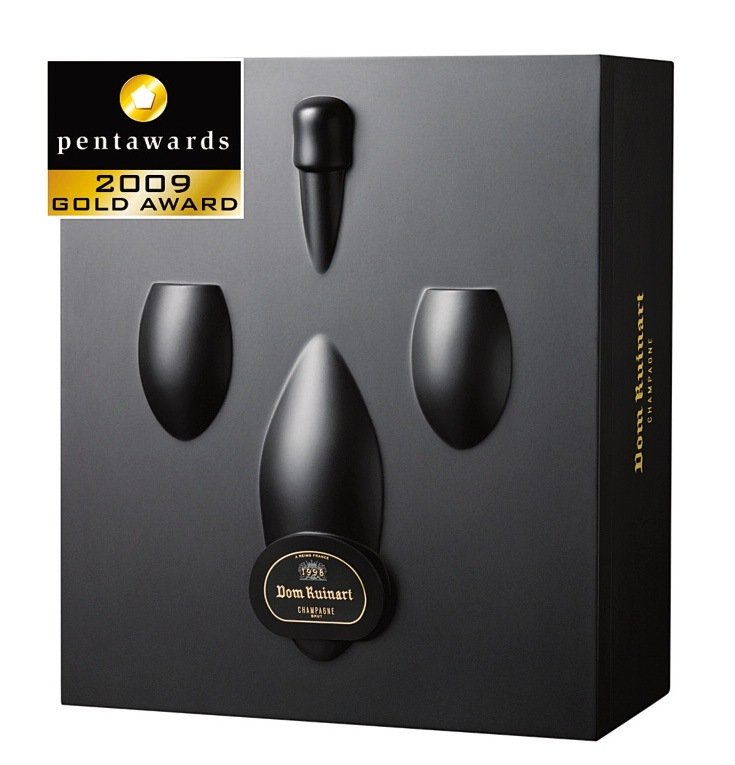
Packaged goods have often been termed as “the silent salesman.” By reaching out to their intending customer on the shop-shelf, packages are designed to communicate brand attributes and inform the customers to help them make a judicious choice, in much the same way as a real salesman. In their bid to capture more and more of the customer’s mind space, market movers are now turning to devices other than visual communication, such as touch, smell, sound and even taste! Packaging that appeals to a consumer’s sense of smell, touch and sound in addition to sight, improves the chances that a product will get noticed, picked up and bought.
Nature is a prolific producer of packaged goods. To name just a few: bananas, oranges, melons, nuts, peas, are typical examples. Notice how shoppers select nature’s packaged goods: first the best looking produce is spotted from among the heaps laid out by the sellers; then a sample is picked up and ‘felt’; after that the shopper may even smell the fruit or even demand to taste it before the purchase decision. Clearly the shopper is using all five senses – sight, smell, taste, touch and sound (the shopkeeper’s sales talk) while choosing nature’s packaged goods.
For years, brands too have been perfecting the art of multi-sensory branding to engage all the five senses of their customers in an effort to draw in new customers and create a loyal base. This may be in the form of perfecting the crunch of their food product, the colour of their logo, or their product’s memorable jingle. In today’s increasingly competitive environment, it is becoming more intentional and most definitely more vital for brand marketers.
In packaging design, nowadays, multi-sensoric is more than just a buzz word. Producers of packaged goods need to bank on creating innovative differentiation on the shop-shelf by the use of ‘sensuality’ to entice their customers. As we all experience, sensual enticement is said to be the result of a ‘bundle of favourable signals’ that reach the brain directly as a result of a pleasurable encounter. When two people are attracted to each other, it can be termed to be the result of a multi-sensory situation. The five senses of touch, taste, smell, sight and sound come into play. Beyond the proverbial ‘first glance’ come tactile, acoustical, olfactory and gustatory stimuli that arouse the ‘ultimate emotions.’ Similarly, according to some of the latest consumer research findings, it is reported that the brain tends to ignore the brand mark and instead get stimulated or emotionally aroused, more powerfully by attributes like colour, touch, smell, sound and taste.

Studies have been conducted in the West to measure the impact of multi-sensoric signals converting into actual buying impulses. The results are indisputable. As many as 60% of consumers can recall multiple sensory impressions whereas just about half those consumers can recall the product if only one sensory impression is communicated.
Creatively cover all five of your customer’s senses
The enormous potential of packaging design to arouse the buying impulse is further realized when it is considered that no advertising in any medium has the same impact as that of packaging. Point-of-sale (POS) packaging has the unbeatable position of having ‘face time’ with consumers and delivers products directly into their hands, besides making the brand, its promises and its products are more tangible.
According to recent research quoted at www.designforceinc.com, it is estimated that at least two out of every ten of the world’s leading producers of brand-name goods will soon feel the need to analyze and redefine their so called ‘brand signature.’ This is most likely to result in the use of multisensory strategies to secure sustained loyalty for their brands and in turn secure the existence of those companies as well. It will also mean optimizing the design of their packaging too as a component of the overall branding.
While ‘sight’ still remains a major contributor to the appeal of packaging design, the impact of other senses is quoted by Martin Lindstrom (a World’s Brand Futurist) as follows:
– Smell 45%
– Taste 31% – Touch 25% – Sight 58%
With such data in mind, obviously it makes good business sense to design packaging to appeal to all five senses of a consumer. But that is easier said than done: ‘How would one use smell? Let the consumer smell the overprint lacquer? Or, what do we do about taste? Will the customer be invited to lick the photographs?’
Without running the risk of poisoning the buyer, packaging makers now have the opportunity to use inks, materials, master batches and hi-res photography and printing in a creative way to arouse the ‘ultimate emotions’ of their buyers.
‘Five Senses’ packaging
To meet the increasing demand for multisensory effects at the POS many highly innovative processes have already begun to be visible. These can essentially be classified as:
– pack architecture and materials to enhance look and feel.
– graphic enhancements and hi-fidelity prints to cue and arouse the senses of taste and smell
Some of the other processes aimed at a multisensory pack experience include:
– user friendly plastic packs offering tactile smoothness, grip, gloss, feel or glitter
– carton quality — surface structure and smoothness, rigidity to withstand crushing
– printing — printing process, colours, scented coatings
– enhancement — foil laminating, foil stamping, relief embossing, RFID coding
– die-cutting for innovative pack architecture
– window patching to allow partial visibility of the contents – sound effects – like “click top” or a pop effect.
Touch me, for a great ‘hand feel’
Most of us experience the enticement to touch (and thus pick up) packaging that offers an attractive ‘hand feel’ or texture. This makes the sense of touch too important to be ignored during packaging design.
Several market studies have revealed that when a consumer is faced with shelves full of competitive packages and colours in a supermarket aisle, from two metres away, the first thing that tends to catch and hold attention is the structural design of the pack. In turn, this must help to prompt the customer to come closer and hopefully pick up the product.
Hand feel resonates with consumers. Embossed or etched glass bottles and jars are tactile. 3D effects on mono-cartons can be created by the use of embossing, or films or foils. The application of over-varnishes on packaging can create alternating matte and shiny finishes. Once in hand, tactile packaging makes the products inside more attractive than competing products and brings them one step closer to purchase.
Ah! That delightful smell!
The power of smell to create expectation or to arouse nostalgic memories is well recognized. Smell can suggest luxury, delight the mind, make the mouth water and thereby induce purchase.
Package coatings or inks with embedded, micro-encapsulated, ‘scratch and sniff’ panels for scents have been around for quite a while. While their use has been limited, they can be especially useful for the promotion of high premium coffee, tea, gourmet foods, desserts and of course classy cosmetics.
Nowadays, with more ingenious devices, fragrance effects can be incorporated right into the packaging structure or the closure system. Embossed devices can be used to invite customers to ‘sniff me’ within enticing graphics of fresh flowers or herbs for the marketing of shampoo for example.
Wouldn’t such ‘sniff me’ features in a package design be sure to excite consumers and give them the impulse to take home the product there and then?
Look, hear the sound!
The techno-economic feasibility of incorporating sound effects in packs is overcome by offering cues to the human brain to make associations with sound effects.
This can be in the form of presenting the pleasurable imagery associated with a sound on the pack. For example, freshness or quality associated with ‘crispiness’ can be implied by the use of artful graphics to imply the sound. Contemporized, packaging for chips and wafers is a great example. The packaging itself must feel and sounds crisp. Carbonated soft drinks with their bubbles and large lemon/lime icons over the brand mark also cue consumers to think of the sound the package will make when the top is popped open and the fizz of the contents which will provide immediate refreshment.
A taste of class
Among the five senses taste remains the most challenging to achieve as an attribute of pack design. Approaches that have been tried are to put out ‘tasting packs’ (for confectionery as an example) at strategic spots in a supermarket aisle. Shoppers are encouraged to taste the product at the POS in an attempt to prompt purchase.
Cueing the brain to respond by arousing the salivary glands with the help of high fidelity images is another frequently used device made possible nowadays with the help of modern print processes.
But visual impact is still vital
Imagine walking past a cluttered shop shelf and suddenly spotting a beautiful pack in the crowd. In popular parlance this would be termed a ‘double take’ moment. Creating more ‘double take’ moments is the aim of all packaging design. This is because consumers are known to see packaging structure and colour, and identify the brand signature before they engage with it in any other way. Leveraging the brand identity, brand elements and signature colours in a consistent and correct manner helps to make the packs more compelling and emotionally evocative.
Obviously thus multisensorics are creating a buzz in markets around the world. The full potential of this volatile and yet so far virtually unexplored topic is just beginning to be realized. The ‘emotional quotient’ of brands to engage with you is being rejigged. Perhaps the day is not far when an RFID chip implanted in a pack near you will cause your cellphone to beep and connect you automatically to a friendly call centre operator. The term ‘fallen in love with the packaging’ is about to take on a bizarre new meaning.
The above article was originally published in the January-February 2010 issue of Packaging South Asia.









